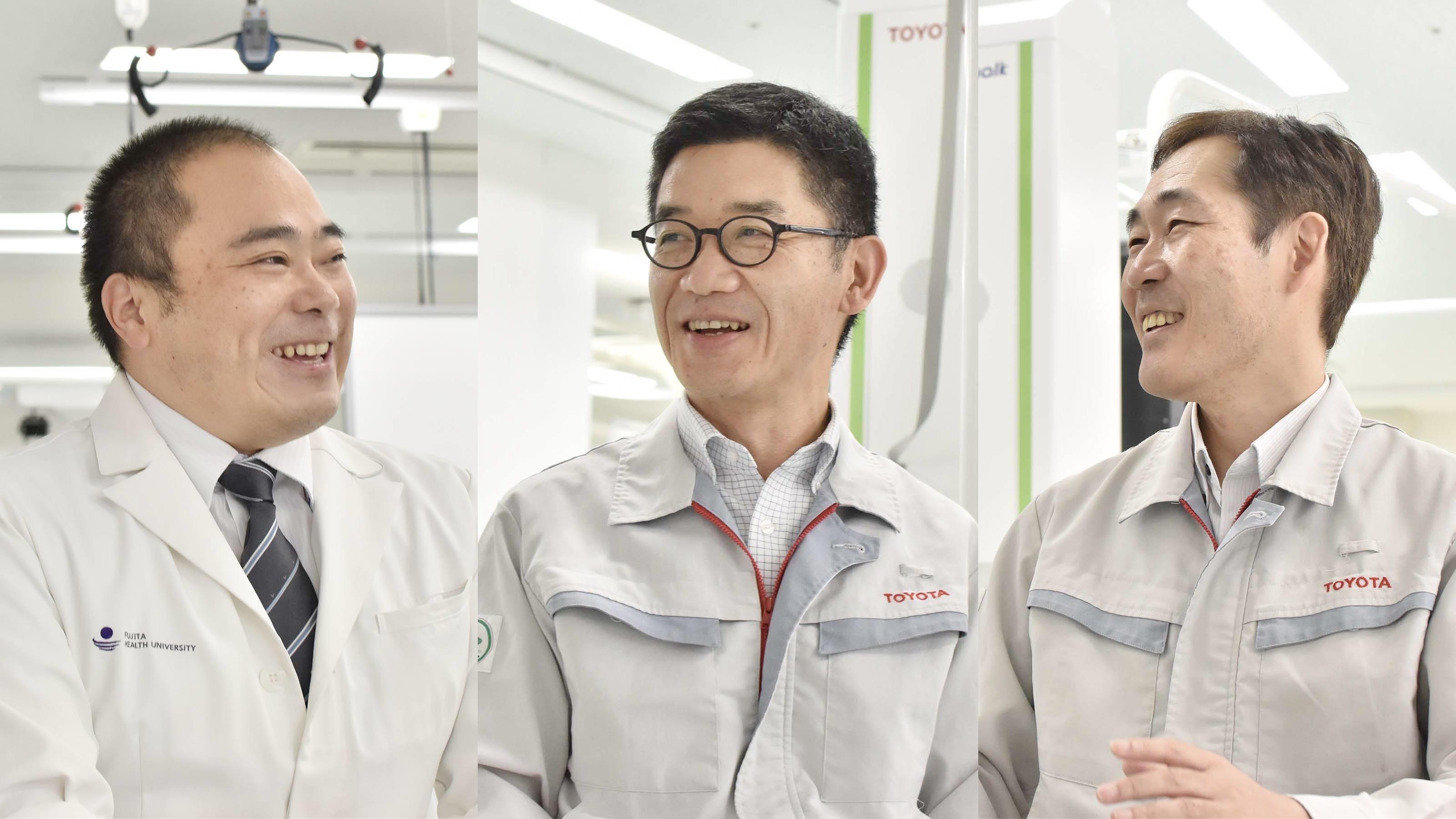
Toyota's rehabilitation assist robot development started inauspiciously with an overly technology-focused failure. This article takes a look back on a development process that spans more than a decade.

Toyota’s vision of “Mobility for All” represents its belief that “mobility” is about overcoming challenges and making dreams come true.
Since announcing to the world its shift to transform from an automobile company to a mobility company in October 2017, this phrase has become a compass by which Toyota sets new challenges, and it is used in all kinds of its activities.
However, 10 years even before that, there were people who were already living by these words. This article tells the story of the doctors and engineers who faced the most fundamental “freedom of movement” for all.
Rehabilitation assist robot for people who can no longer walk
In August this year the cumulative 100th unit of the “Welwalk” rehabilitation assist robot developed by Toyota was completed.
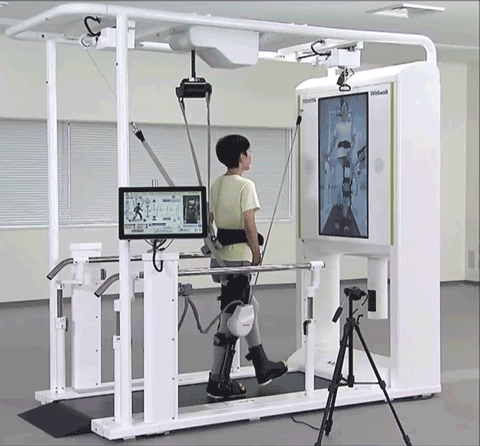
Welwalk is a robot designed to provide rehabilitation support to patients with lower limb paralysis as a result of stroke and other causes. While assisting the movement of limbs that are unable to move freely, Welwalk can display various information on a large monitor in front of patients, with the aim of helping them to walk unaided.
In conventional rehabilitation, it is generally the case that the physiotherapist lifts the patient’s body up to provide support while the patient practices walking, taking care not to let the patient fall. Using this conventional method, it is difficult to objectively observe the patient’s walking condition.
However, by using Welwalk, through robot assistance that is optimized for the patient’s condition it is possible to create a gait that is close to the patient’s personal goals from the early stages of rehabilitation. In other words, it is possible to practice a natural walking style, while also feeling that you are walking with your own legs.
Welwalk also makes it possible to collect various quantitative data. All the items that can be adjusted using the system are automatically saved, and the leg braces that are adjusted to fit the patient’s physique are fully calibrated so that the same conditions can be reproduced each session, even if the physiotherapist is replaced.
Together with cancer and heart disease, strokes are one of the three major diseases affecting Japanese people today, with approximately 300,000 new cases each year and a total number of stroke patients around 1.18 million. It is one of the major reasons why people require nursing care and many patients go through rehabilitation.
“I will probably never walk on my own two legs ever again.” The Welwalk is Toyota’s way of responding to people who are in the depths of just such despair.
Development started from a “me-centered” focus
“I have been asked so many times, ‘Why is Toyota doing this?’ People usually understand when I tell them that the mission we aim to fulfil is to provide opportunities to walk, which for humans is the most fundamental of any kind of mobility.”
These are the words of Hitoshi Konosu, the creator of Welwalk and Project General Manager at the Healthcare Business Dept., New Business Planning Div..
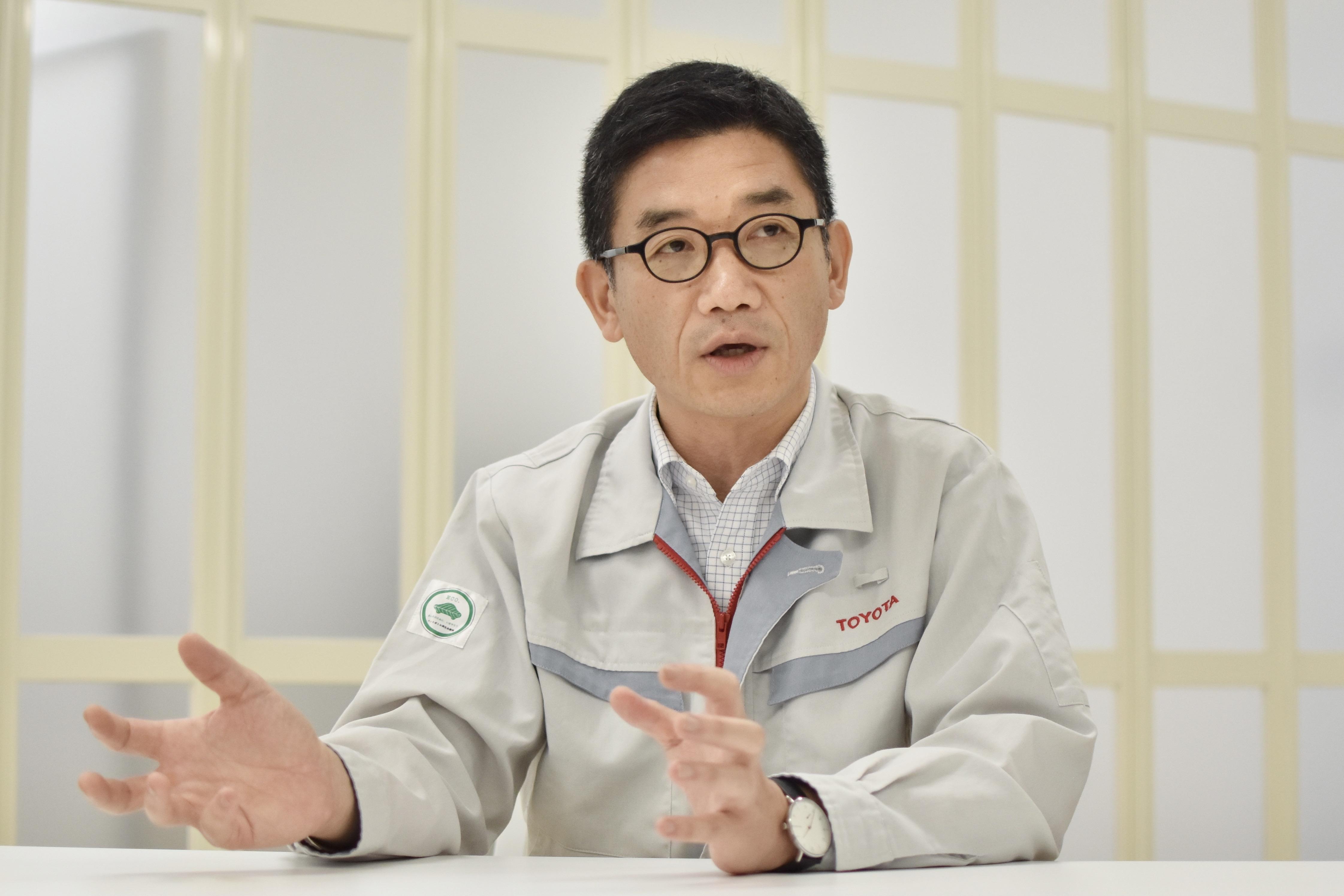
There are many people who have mobility issues, either due to illness or accident. It is for such people to whom the aim is to provide “freedom of movement.” So what kind of contribution can Toyota make to the challenges of a declining birthrate and aging population that Japanese society faces today?
Back in 2007 it was precisely such thinking that inspired the launch of development of a partner robot for medical and nursing care assistance.
Toyota’s history of robot development goes back many years. It was in the 1980s that development of industrial robots for vehicle assembly plants began, and at the 2005 World Exposition, Aichi, Japan, Toyota proposed the concept of Partner Robots living together with humans.
Leveraging the technology developed up to that point and through a process of trial and error, by the end of 2007 the first prototype was completed. The development team of Konosu and Masayuki Imaida (Department Manager at the Healthcare Business Dept., New Business Planning Div.) went knocking on the door of Fujita Health University (Toyoake City, Aichi Prefecture) to seek the assistance of Professor Eiichi Saitoh (currently Supreme Advisor), an authority on rehabilitation medicine.
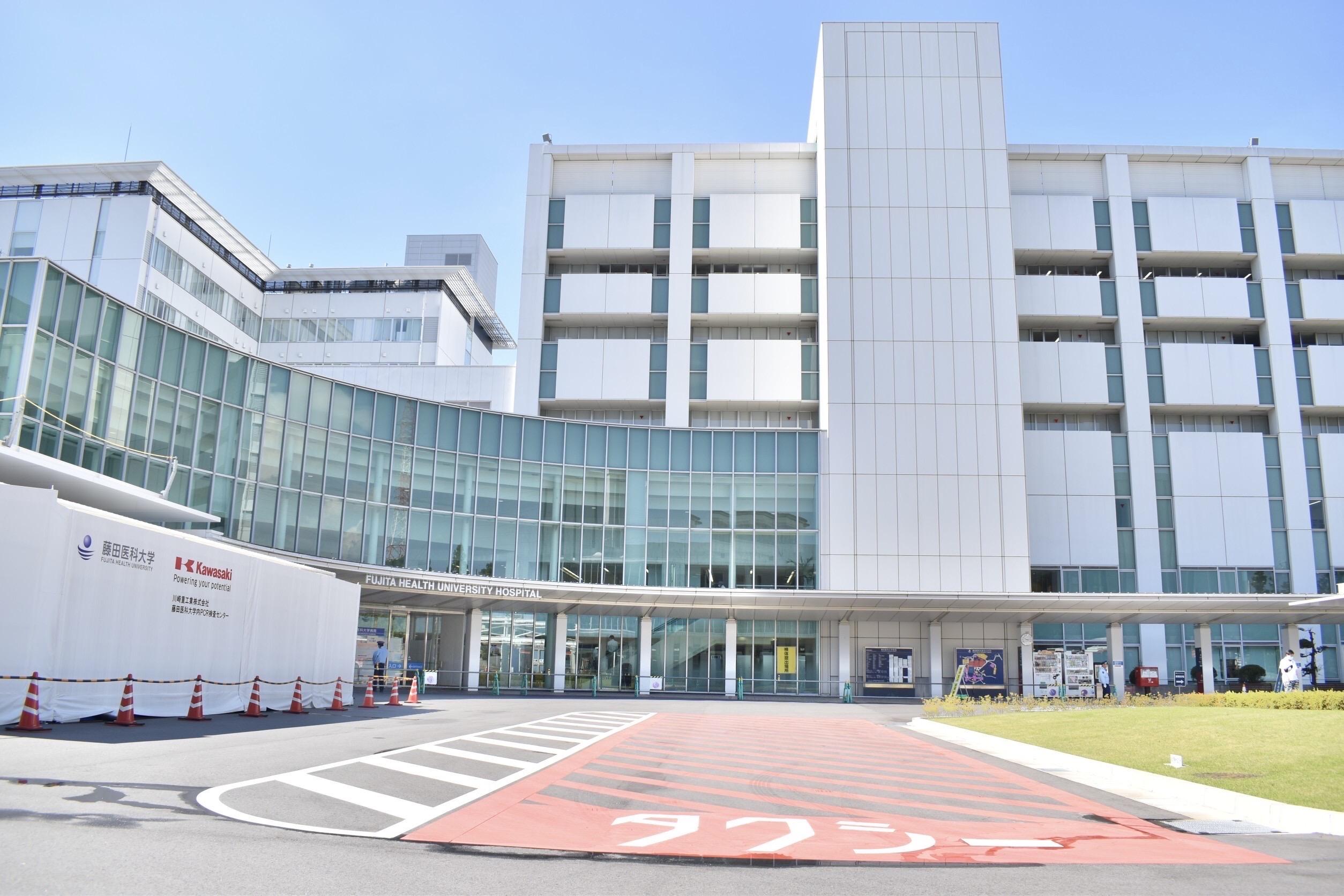
The Toyota team certainly weren’t overly confident in their technology, nor did they think that everything would work smoothly from the beginning. Even so, Prof. Saitoh’s first words were less than encouraging. “That will not work at all. You have no appreciation or understanding of rehabilitation or patients.”
The prototype was large and covered in wires. It was also designed to be attached to non-disabled legs, and weighed 17 kg. What is more, in the process of development, an able-bodied person had worn the robot to conduct a simulated verification. To a rehabilitation expert like Prof. Saitoh, who himself had a disability in his right leg, this prototype was completely nonsensical.
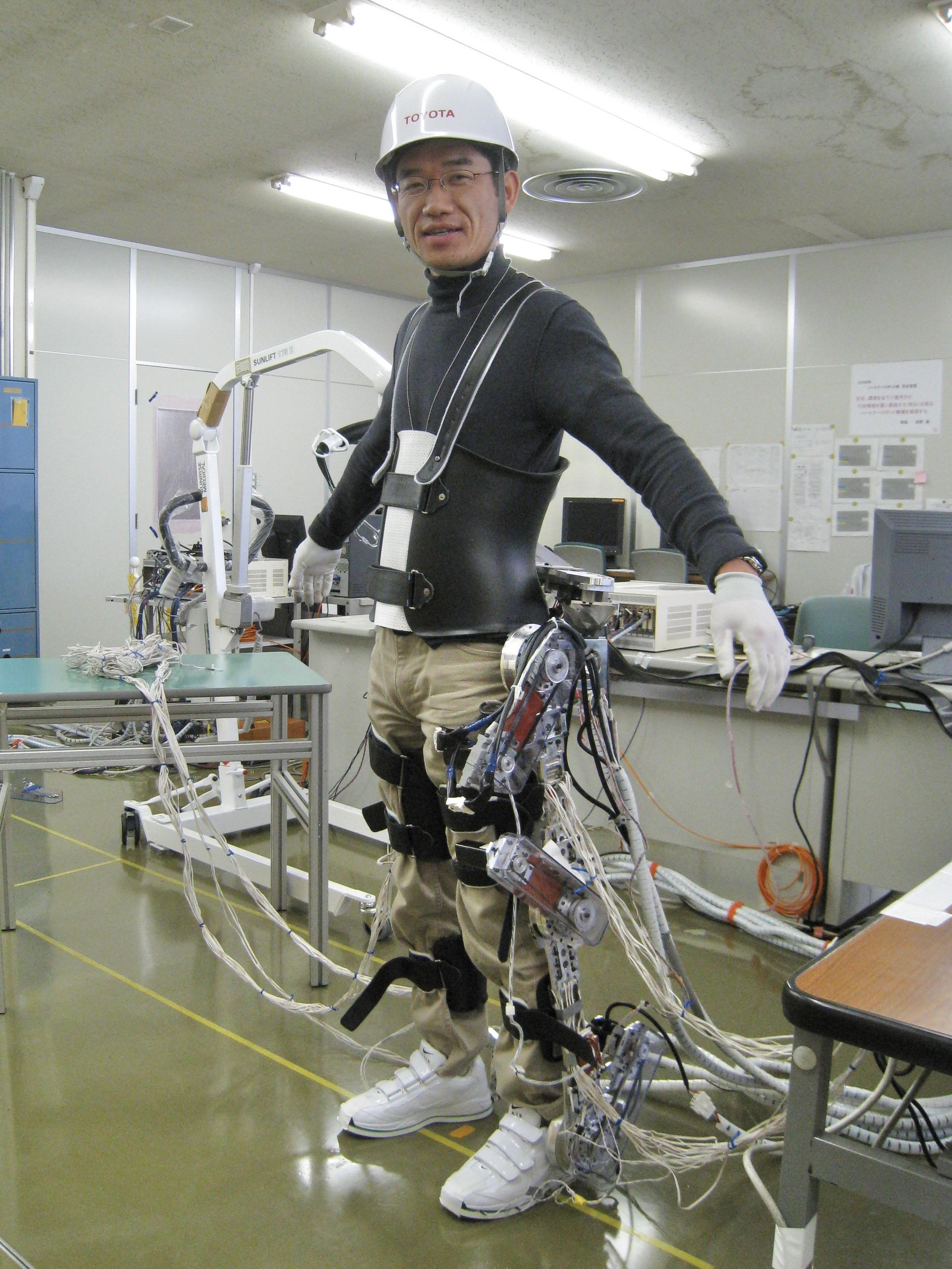
Looking back on that time, Konosu says, “When I think back now, I realize that the robot I created was rather too “me-centered,” with a self-indulgent focus purely on technology.”
Prof. Saitoh offered himself as a test subject, noting that, “Unless you realize how rehabilitation works you won’t get anywhere. You can’t engage in development without understanding the realities for patients and disabled persons.” That was the starting point for a medical-engineering collaboration.
Once every two or three days Prof. Saitoh would work himself into a sweat, trying out the prototype, creating data and identifying issues. On days when there were no trials the team would visit hospitals and the rehabilitation centers there, seeking opinions from doctors, physiotherapists and patients.
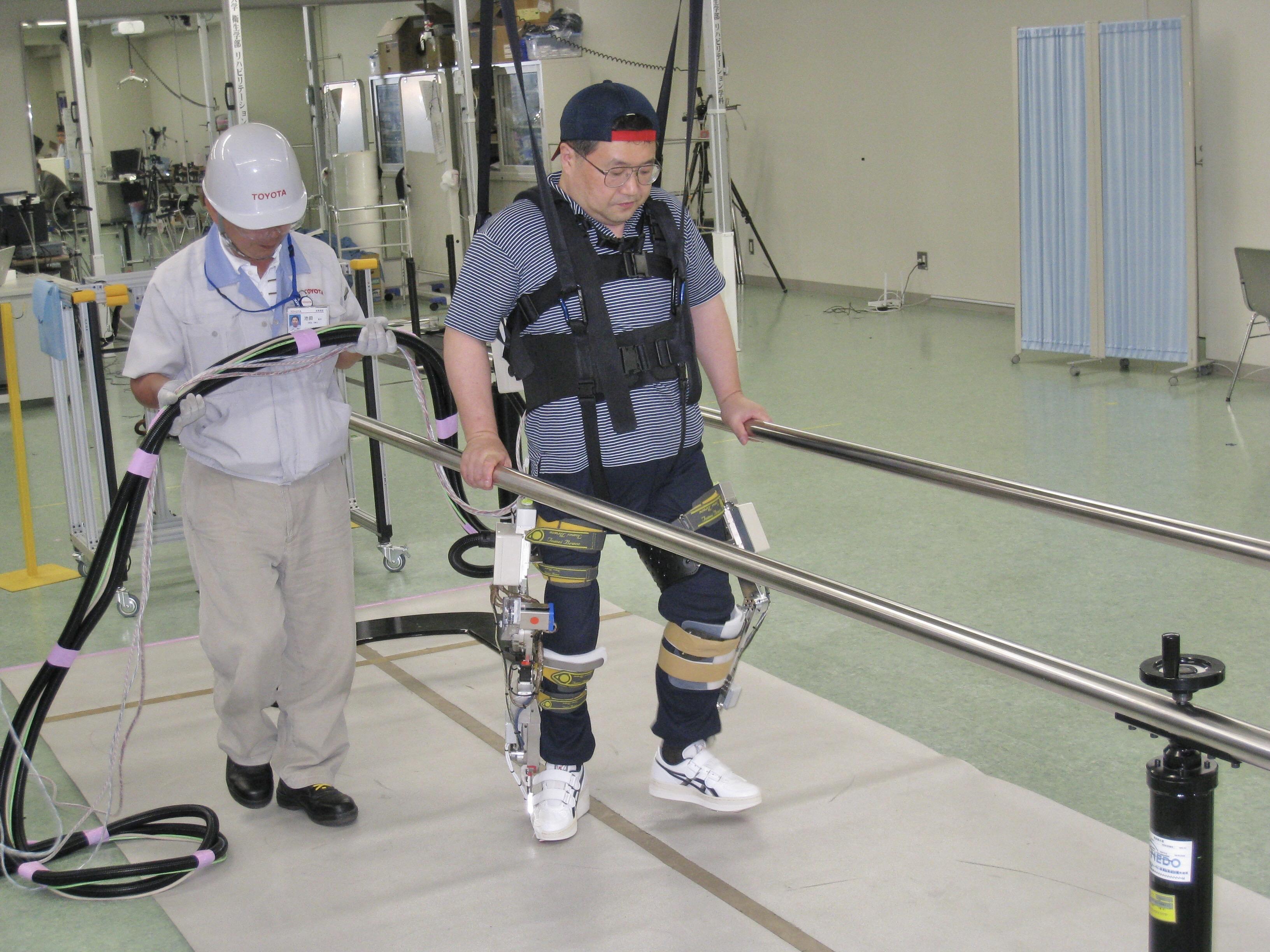
What is needed in the clinical setting, where interactions with patients take place daily? What are the problems that are encountered and what are the ideal technologies to resolve such problems? Throwing out the preconceptions and more fanciful ideas of engineers, development was launched that moved the focus away from “me” to a more “you-centered” focus based on genchi genbutsu (going to the source to get the facts) approach.
Looking back on those days, Imaida recalls, “We were really fortunate to have found a partner who was so accommodating and willing to cooperate.”

Motor learning theories a critical turning point
Although their daily visits to hospital helped the engineers deepen their understanding of vocabulary used in the medical context and rehabilitation practices, it still took time to understand the true meaning of the doctors’ observations.
Even after having improved parts based on comments made by Prof. Saitoh, there were still gaps in understanding and perception that could not be easily bridged, as Prof. Saitoh would say upon seeing the improved parts, “That may indeed have been what I said, but my intention was different.”
Prof. Saitoh’s response to the development team’s concerns about why there were still such perception gaps was simple: “You don’t have the first idea about motor learning theories.” There and then lectures began on this topic.
Motor learning theory is the theory that motor functions lost due to illness can be relearned. Prof. Yohei Otaka, who took over from Prof. Saitoh in 2019 and is currently engaged in joint development activities, explains it this way.
“In general, when people in engineering create a robot, it is the robot that takes a major role. In medicine too, the main role tends to be performed by persons making interventions, such as those ‘performing surgery’ or ‘prescribing medicine.’ However, in the case of rehabilitation, nothing happens unless the person themselves is actively moving. It’s a learning process where the person whose legs have become unresponsive learns anew how to walk. Therefore, it is important to effectively help the patient’s active learning.”
“In current rehabilitation techniques the physiotherapist uses various tools, but until now it has been difficult to seamlessly provide learning environments where tools don’t help the patient too much while keeping the tasks not too challenging. However, as Welwalk supports the learning process that gives consideration to the patient’s conditions, it enables the patient to regain their independence faster.”

One of Prof. Saitoh’s mantras is, “There’s a whole world of difference between ‘one can walk’ and ‘one becoming able to walk’.” If a robot could provide assistance, a person could be able to walk. However, simply providing assistance only serves to slow the learning process, meaning that the person will not become able to walk themselves.
Being able to get to grips with the concepts underpinning such observations marked a real turning point. The Toyota development team was at last able to read between the lines of what they had been told and devise proposals to which they had added their own insight and expertise.
Bringing the result of 10 years of development to the world
The resulting rehabilitation assist robot was given the name Welwalk, and in 2011 verification tests in actual medical facilities began. From 2014, clinical research was implemented at 23 medical institutions across Japan, and the development team worked to incorporate the opinions they received from the field.
Then, in 2016, the Welwalk WW-1000 received approval as a medical device, and from 2017 devices started to be rented out to medical institutions. It had taken a total of 10 years since development first began. Although you might have expected them to be thrilled to see their years of efforts finally bear results, Imaida says that the development team had mixed feelings.
“Up until rental of the robot started it had already been put to use in various hospitals, so we knew for certain that it could be useful. Even so, each patient is completely different, with each person having a different gait and physique. We realized that we must change our approach to rehabilitation to fit each individual. Rather than being able to feel relieved, we felt that we were just getting started.”
Despite such concerns, as it turned out, all 80 of the planned units were pre-ordered, and preparations for the next round of production began immediately.
In 2019 the Welwalk WW-2000 was announced, with improved functions and enhanced usability. The business model was also switched from a rental basis to sales. A total of 94 units, including both models, are now in use around the country and have been utilized for patient rehabilitation for a cumulative total of more than 5,000 people.
Prof. Otaka expresses his expectations for how Welwalk is helping to change rehabilitation medicine in this way.
“In rehabilitation, as issues are associated with complexity, the key usually lies in skilled techniques and rule of thumb. Therefore, the methods were mostly qualitative, and it has been difficult to standardize or structure what we do based on objective observations and quantitative data.
With hypertension you know how many tablets you will need to take to lower your blood pressure, but rehabilitation doesn’t work like that.”
“However, not only does the use of robots increase the therapeutic effect of rehabilitation, they can also record in a quantitative manner the things you have done and the effect they have had. The most difficult part (i.e. standardization and structuring) is in the process of being solved, and I imagine that this will lead to great progress in medicine itself.”
Impressions of Toyota change through working together
Aiming to realize a “society where no-one is left behind,” Toyota is currently engaging in R&D towards the introduction of the next Welwalk model. It has now been five years since Prof. Otaka joined the development team and he says that his impressions of Toyota have changed significantly over that time.
“The team works much harder than you might think. As something is created through cumulative efforts while learning from frequent failures and missteps, this process has changed my image of Toyota and also the way I interact with it. My image has changed from Toyota being a ‘mega corporation’ to one that you could say is an ‘earthy and sweaty group of hard working people.’”
“Another thing you realize when you work together with Toyota is that it is a sincere company. Their approach is all about safety, and being careful when working to build something up. They work to ‘make things with integrity’ and I consider them a trustworthy partner.”
Fujita Health University’s cherished “clinical practice first” and Toyota’s “genchi genbutsu.” The values that these two organizations uphold have been melded together over time to become inseparably linked.
However, the challenge is still a work in progress. When asked about what the future holds, Konosu says, “Our mission is to remove the price barrier to using Welwalk, so that it can be used by all people who need it.”
Prof. Otaka is also constantly looking ahead to the future, noting that, “Until now Welwalk has been used to assist mainly people who have had a stroke and are hospitalized with relatively severe symptoms, but our vision is to broaden the scope for its use to include people in post-recovery, or those with different conditions or disabilities.”
When asked at the end of the interview what he hopes to achieve, Prof. Otaka has this response.
“When ‘Mobility for All’ is Toyota’s mission, the mission of people engaged in rehabilitation is to enable ‘freedom of activities for all.’ We are all climbing to the same summit of a mountain.”
Ensuring freedom of “mobility” and “activities” is a way to ensure happiness. Sharing the same goals, the team of doctors and engineers continue their ongoing challenge.


